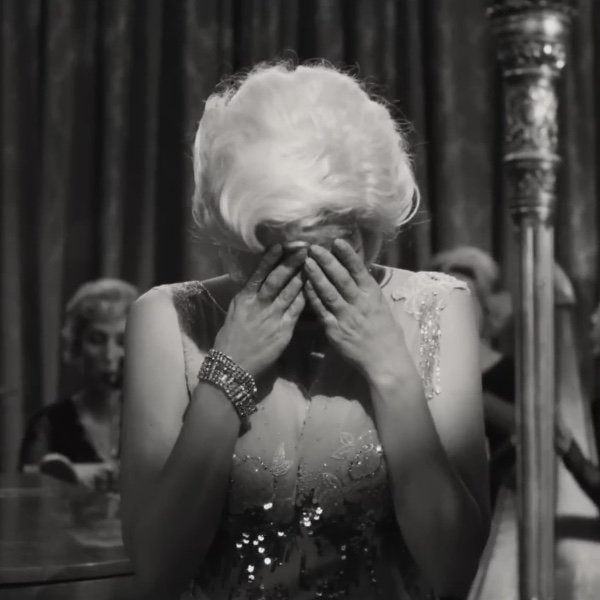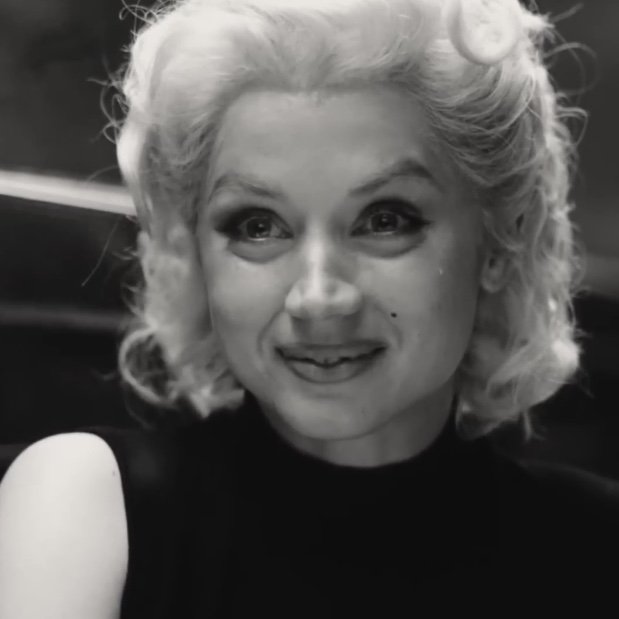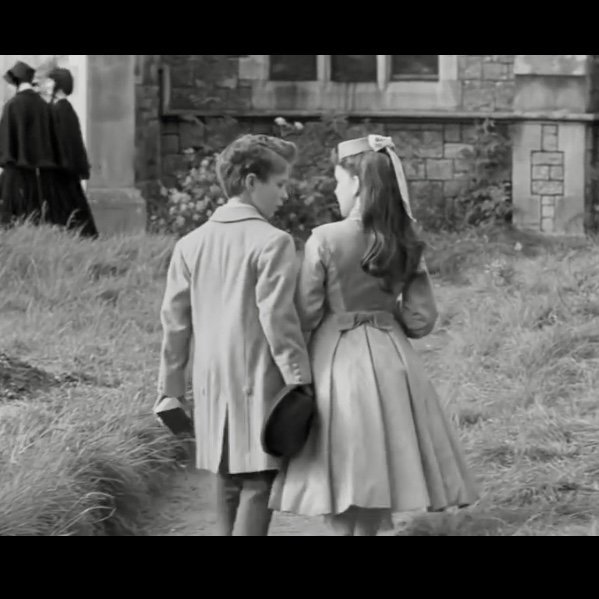Stranger(s) Things: Love, Loss and the Gay Gen Xer in All of Us Strangers
There are movies, there are films, and then there are pieces of cinematic art. Andrew Haigh’s hauntingly beautiful (or beautifully haunting), All of Us Strangers easily falls in the cinematic-art category. (For the purposes of this review/analysis, however, I’ll use the word, film.) Focusing on (queer) loneliness, familial (re)connection and the promise of new love, Strangers is somber and surreal, dreamy and devastating. Andrew Scott inhabits the character of Adam, a screenwriter who spends much of his time alone in his London high-rise apartment building. One night, Harry (Paul Mescal), seemingly the only other resident of the building, appears at Adam’s door, drunk, chatty and certainly flirty. During this brief exchange in the doorframe, Haigh sets up the dichotomy between the two men: outside/inside; younger/older; inebriated/sober; forward/reserved. Cue the phrase: opposites attract. Adam cordially declines Harry’s advances, and shuts the door… for now.
Making Peace with the Past
Later after Adam stares at his blank laptop screen, waiting for the creativity muses to pay him a visit instead, he discovers a photo of his childhood home. He decides to leave the confines of his apartment, and the city, to venture out into the suburbs to revisit his old haunts… and haunt it does. He meets two unlikely inhabitants, to put it simply, ghosts from his past, the meeting serving as inspiration for Adam to invite Harry, his potential future, into his home and into his heart.
As mentioned earlier, Adam’s reserved nature and initial reluctance toward letting Harry in (on varying levels) is representative, perhaps, in part, of his upbringing in the 1980s, at the start of the AIDS epidemic. (The film suggests that Adam was around 11 years old in 1987.) With so much uncertainty and fear surrounding the virus during the decade, these were, perhaps, additional factors that contributed to a future Adam, a gay Gen Xer, to choose abstinence (and self-isolation) over physical intimacy. The younger Harry, likely born in the mid-1990s, is part of the next generation, and seems to have a different, freer approach to sexual experiences. When Adam and Harry begin an intimate relationship, Adam is out of practice, even laughing awkwardly during their first kiss because he has to remind himself to breathe. Later, while Adam is in a bathtub, he is literally and figuratively naked, choosing to share a moment of vulnerability with Harry, who is sitting outside of the tub. Adam admits that for a long time the idea of being with someone physically meant death. These types of honest, heartbreaking disclosures permeate Haigh’s screenplay.
Holding Space
Haigh also chose to shoot parts of the film in his own childhood home. This is a writer and director dedicated to authenticity. One of the many poignant moments finds Adam walking into his childhood bedroom, which has been frozen in time: a boombox sits on his desk; he looks through a few vinyl records that encapsulate English pop music of the mid-‘80s: Erasure’s The Circus (1987) and Frankie Goes to Hollywood’s Welcome to the Pleasuredome (1984). The room looks like a fairly common kid’s bedroom in the ‘80s, but the inclusion of the albums from (and posters of) gay-fronted music groups suggest that a young Adam may have already begun gravitating toward these forms of gay iconography. The room was where 11-year-old Adam could be himself: it was a safe haven from school bullies; his own private quarters for crying; it’s where his musical and artistic interests hopefully brought him moments of joy. Haigh brilliantly incorporates other songs from the decade into the story: Frankie Goes to Hollywood’s “Power of Love” (1984); Alison Moyet’s “Is this Love?” (1986); Pet Shop Boys’ “Always On My Mind” (1987), which you’ll never hear the same way again. The latter, with its theme of regret, expressed from one lover to another, becomes repurposed as an apology from a parent to a child, during the film’s heartwarming Christmas scene.
For All of Us (Strangers)
The story is sure to resonate with many in the queer community, particularly gay Gen Xers, yet the film still allows for something universal, regardless of sexual orientation. Themes of love, loss, and second chances will likely confirm how much we all have in common, particularly after the third and final act, which is emotionally heavy. Ironically, for a story that deals with the importance of closure in order to move forward, its conclusion may, in fact, present more questions than answers, but it almost doesn’t matter with something this beautiful, for All of Us Strangers is a masterpiece that opens the heart, and the mind.
Double Vision: Passion, Fashion, and The September Issue
“September is the January in fashion.” Candy Pratts Price, Executive Fashion Director, Vogue Magazine.
R. J. Cutler’s 2009 documentary, The September Issue, a look at the arduous process of compiling Vogue magazine’s biggest edition of the year, was initially promoted as a profile of its Editor In Chief, Anna Wintour (left), but ended up shedding more light on Creative Director, Grace Coddington, resulting in her becoming the film’s most fascinating star.
Coddington’s free-spirited, yet focused passion versus Wintour’s structured, and equally focused, determination made for a compelling dichotomy. Even their hairstyles and overall fashion sense speak volumes: Wintour dons her signature bob, classic and conservative, a strand rarely out of place, while Coddington (below) rocks thick, flowing, rock-star-style red hair. Ironically, Wintour, often stern, tends to exude personality through attire that embraces prints and color, while Coddington, like the cool bohemian aunt in your family, is frequently draped in black, almost choosing to pull focus from what’s on her person to what’s on her pages.
Coddington fights to get her work into the magazine, but it repeatedly gets put to the side, as Wintour edits, then ultimately decides what fashion spreads will make it into the issue. As Coddington senses her spreads are on the chopping block, she can’t hide the defeat on her face, as she sits at her desk. She updates the documentary crew about her spreads’ seemingly limited lifespan: “They took two more out and there’s question marks on two more, so it’s been whittled down… and I’m furious,” she calmly discloses. After a somber pause, she reveals with a brief nervous chuckle: “And it’s very hard to go on to the next thing.”
Later, a trip to Paris reignites the inner fire that looked to be extinguished. In a film full of flash and fashion, and pretty pictures, it’s this section that shows the inner beauty, particularly as Coddington overlooks the gardens at Versailles, an inspiring perspective emerges: “You have to go charging ahead, you can’t stay behind.”
And isn’t that what fashion, and life, is all about. The September Issue is a glimpse into the glamour, but more so it’s in-depth insight into the relentless passion it takes to create, and the frustration that can happen along the (run)way.
The September Issue cinematographer: Robert Richman.
Platinum Portrayal: Ana de Armas’ Golden Performance in Blonde
Disclaimer: Please note that this article about the film, Blonde, features content related to mental and emotional trauma, and other similar themes, that may be triggering for some. Reader discretion is advised.
While many reviews of Andrew Dominik’s Blonde, the 2022 film based on Joyce Carol Oates’ historical fiction novel of the same name, were rather scathing, it’s Ana de Armas’ portrayals of Norma Jeane Mortenson and Marilyn Monroe that serve as the main reason to muster up the courage to try and commit to watching the often disturbing and disjointed three-hour film.
Oddly enough, through no fault of her own, it’s de Armas’ performance that’s representative of how disjointed the film really is: simply put, she’s far better than the material that surrounds her. Here are at least five scenes from Blonde where de Armas goes from good to great, displaying a wholehearted commitment to portraying a fictional incarnation of a famous figure, as well as the daunting, almost insurmountable, challenge of playing the most famous female icon in Hollywood history.
5. Calling the Shots: After talking to her agent by phone about the glaring salary inequity between her and a much-higher-paid Jane Russell for 1953’s Gentlemen Prefer Blondes, Norma Jeane calmly questions: “And I’m playing the blonde, in Gentlemen Prefer Blondes? That’s an insult.” She remains polite, even announcing: “I’m gonna hang up now,” but a second later her agent calls her Marilyn, to which Norma Jeane angrily replies: “F*** Marilyn, she’s not here!” and slams down the receiver. de Armas gives Norma Jeane a look of stunned disbelief at what has transpired, but soon proudly smiles at her newfound confidence.
4. Pink Diamonds: de Armas is Monroe’s Lorelei Lee doppelgänger in Blonde’s recreation of the classic “Diamonds are a Girl’s Best Friend” musical number from Gentlemen Prefer Blondes. With only two days to learn the choreography, de Armas captured Monroe’s hand gestures, shoulder shrugs and slinky movements on the narrow staircase. de Armas did 21 takes, with Dominik using the 21st in the final film.
3. Audition Ambition: In the scene where a nervous Norma Jeane auditions for the role of Nell for 1952’s Don’t Bother to Knock, it’s her opportunity to show the (uninterested) male powers that be how connected she is to the character, to the material and to what it represents. Norma Jeane delivers a solid audition (complete with de Armas dropping a single tear down her left cheek), but still asks to do the reading again. de Armas conveys Norma Jeane’s longing for connection, to be heard, not just seen.
2. A Method to the Sadness: At an acting workshop, an in-depth, Method-style exercise eventually sends Norma Jeane down to the floor in hysterics. As a disheveled Norma Jeane tries to regain her composure, as if she’s been jolted awake from a nightmare, the teacher asks: “What were you thinking of?” To which she replies: “I wasn’t thinking.” She quickly tries to gather her thoughts: “Um, maybe… I was remembering?” This is one of de Armas’ strongest scenes, for its display of raw emotion offset soon thereafter by a subtle, shy smile and a loud sniffle during Norma Jeane’s responses, showing just how committed Norma Jeane was to exploring her acting craft, even after an intense reaction.
1. Mother and Child Reunion: Early in the film, a seven-year-old Norma Jeane is living in Los Angeles with her mentally and emotionally unstable mother, Gladys. After surviving in a volatile, violent environment, Norma Jeane is placed in an orphanage, while her mother is eventually institutionalized. One of de Armas’ most gut-wrenching scenes occurs when Norma Jeane sees her mother for the first time in well over 10 years. de Armas’ reaction is visceral, capturing the sadness of separation, followed by her scanning her mother’s face in confusion. Despite their deeply dysfunctional history, it’s simply a child wanting her mother.
In an interview with the SAG-AFTRA Foundation, de Armas’ theorized as to the nature of this complicated relationship: “She really wants to fix Mother. The absent father figure is a problem, but I feel like Mother is the real problem, and what she feels like she has to fix… She thought, if I can find my dad and he comes back, then my mom is gonna be okay, but because I can’t find him, if I’m very, very famous, he can find me. But really it was the mother, you can see that she is trying to fix that, to build that relationship, and it’s obviously… no reaction there, there’s nothing, there’s no feedback, they don’t recognize each other.”
Honorable Mentions: de Armas has other remarkable moments in the film. For instance: The recreation of “I Wanna Be Loved By You” from 1959’s Some Like It Hot. Norma Jeane is on set in Monroe mode, playfully and seductively lip-syncing to the track, but quickly de Armas’ face switches to reveal a devastatingly deflated Norma Jeane, who stops mid-scene, and puts her head in her hands, only to then erupt ferociously in anger over the alleged demeaning on-set gossip about her. In seconds, de Armas’ range runs the spectrum from physical embodiment to mentally distracted to emotionally enraged.
Also, Norma Jeane’s meeting with “The Playwright,” is a rare occasion that we see her calm and self-assured. She’s clearly smitten with the intellectual across the table, and she beams at the professional and personal possibilities. Their flirtatious exchange of the greeting, “Hey, you” is one of the film’s sweet, all-too-brief moments.
de Armas received several acting-award nominations in early 2023, including an Academy Award nomination for Best Performance by an Actress in a Leading Role. And while she didn’t win any golden statues, her performance is the gleam amid all the gloom.
“Secretive; Whispery; Indecent”: Intentional Disconnect in 1961’s The Innocents
More gothic folklore than gruesome gore, Jack Clayton’s beautifully haunting (and hauntingly beautiful) 1961 film, The Innocents is high-art psychological horror. Co-written by William Archibald and Truman Capote, the film is based on the 1898 Henry James story, The Turn of the Screw.
Deborah Kerr stars as Miss Giddens, a governess hired to care for two children, Flora (Pamela Franklin) and Miles (Martin Stephens), at an English manor. An unsettling tone is set right from the beginning: Behind the initial screen blackness, pre-opening credits, the sound of a young girl (Flora) singing “O Willow Waly” creates a disturbing blurred line between wholesome lullaby and its mournful lament for a lost lover. The disconnect continues through the opening credits, now with birds chirping in the darkness; those familiar tweets most often heard at daybreak, instead of in the dead of night. And finally, a profile of a distressed Miss Giddens, clutching her hands together, tilting her head back with her eyes closed, her forehead glistening with perspiration; the sight of sweat common in the blazing sunlight, not in the glowing moonlight.
Day or Fright
Throughout the crisp, black-and-white film there are a number of bone-chilling scenes. The manor and its grounds become settings for strange goings-on, ones not solely reserved for the nighttime, when fatigue, shadows and imagination can get the best of someone, but in broad daylight as well, often with others nearby. But what is real, and who is credible? In the film’s first line, a sense of doubt is immediately placed upon the viewer toward Miss Giddens, when the children’s uncle asks her during the interview for the governess position: “Do you have an imagination?” An almost embarrassed Giddens replies with a yes. As the film progresses: To believe or not to believe her, that becomes the subsequent question in the viewer’s mind.
Depth of Fear
The crisp black and white mentioned earlier is the work of the cinematographer, Freddie Francis, who used a deep-focus technique, which allows the foreground, middle ground and background to be equally sharp. One of the best examples is when Flora becomes oddly excited about nature’s brutality. She declares: “Oh look, it’s a lovely spider, and it’s eating a butterfly!” (Spiders aren’t usually described as lovely, creating another example of intentional disconnect.) The large depth of field simultaneously creates distance and claustrophobia for the viewer (a visual disconnect), while also establishing Flora as the spider to Miss Giddens as the butterfly.
Brother and Sinister
In addition to this macabre outlook on nature, mature subtexts run throughout, particularly ones dealing with the misguided affection between Miles and Miss Giddens. After learning more about two of the manor’s previous residents, Giddens begins to suspect the prim, proper, poetic Miles, and the once-sweet now emotionally hysterical, Flora are not who they appear to be, that something evil has entered the innocent (foreshadowed when Giddens admires a stone cherub in the garden, only for a cockroach to crawl out of its mouth).
Giddens conveys to Mrs. Grose, the housekeeper enveloped by extreme denial, that both children “are playing, or being made to play, some monstrous game. I can’t pretend to understand what its purpose is; I only know that it is happening: something secretive, and whispery, and indecent.” (Undoubtedly, Capote-penned prose.)
The relationship between Miles and Flora becomes suspect as well. Flora seems to have a psychic connection to Miles, knowing when Miles will return home from his school, permanently dismissed for bad behavior, even before Miss Giddens or Mrs. Grose. Giddens becomes watchful of the two siblings as they hold hands, walking closely together toward the town church. A concerned Giddens says to Mrs. Grose: “Look at them. What do you think they’re saying?… They’re talking about them; talking horrors.”
And the horrors continue through the film’s dizzying conclusion (or disturbing connection to its beginning, as described earlier), one that is both spine-tingling and heavyhearted, where the secretive becomes communicative, the whispery reaches its crescendo, the indecent once again innocent.



















